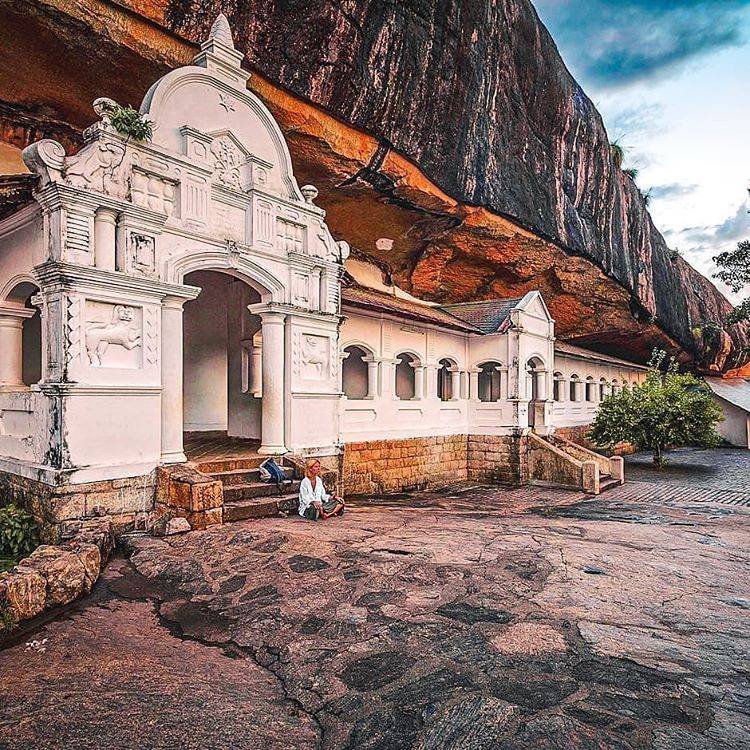The Dambulla Cave Temple, also known as the Golden Temple of Dambulla, is a World Heritage Site in Sri Lanka. This sacred pilgrimage site has been a place of worship for over 22 centuries. The complex consists of five caves, which contain over 150 images of the Buddha, making it one of the most extensive and well-preserved cave temple complexes in the world. The murals covering the walls and ceilings add to the site’s historical and artistic significance, depicting the Buddha’s life and important events in the history of Sri Lankan kings.
Get your dose of History via Email
Historical Background of Dambulla Caves
The Dambulla Caves date back to the 1st century BC. They were discovered by King Valagamba during his exile from Anuradhapura. The king sought refuge in these caves for 15 years. After regaining his throne, he turned the caves into a temple complex. The site has been maintained and enhanced by various rulers since then. In the 12th century, King Nissanka Malla of Polonnaruwa gilded the caves, earning them the name Ran Giri – Golden Rock.
Throughout the centuries, the cave complex has been a monastic sanctuary. It has attracted monks and pilgrims alike. The caves have also been a significant artistic hub. They showcase a blend of religious and secular painting and sculpture. The site has witnessed key historical events, including the arrival of Buddhism in Sri Lanka.
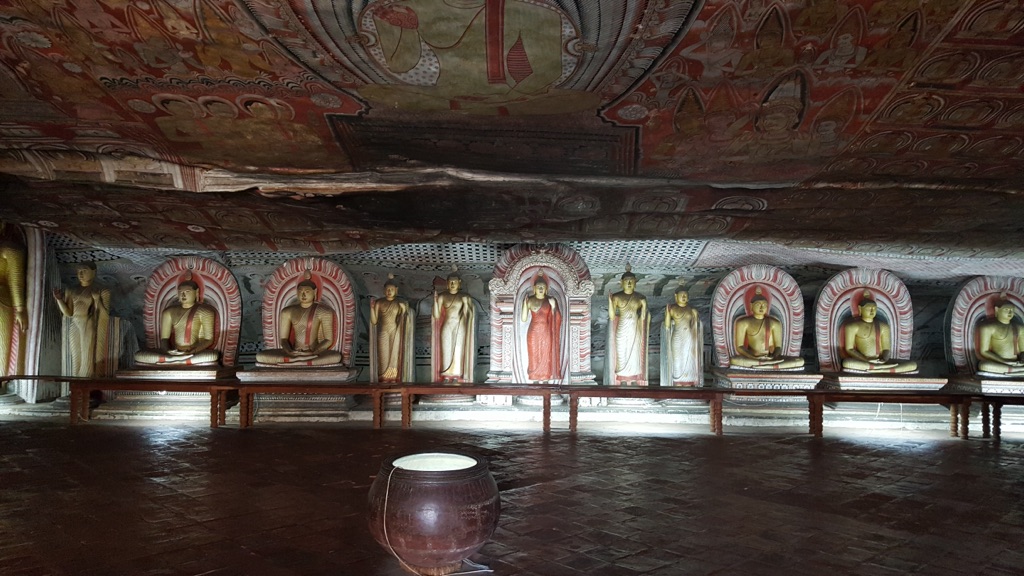
Several renovations and additions have taken place over the years. The most notable are the embellishments during the Kandyan period. This era saw the addition of more statues and repainting of old murals. The caves have thus evolved, reflecting the artistic and religious trends of each period.
The Dambulla Caves have also been a center for monastic life. Monks have lived and meditated in these caves since their inception. The site continues to be a living religious monument. It is a testament to the continuous human occupation and spiritual devotion in the area.
Historically, the caves have not been the scene of major political events. However, they have been a symbol of religious resilience and continuity. They have withstood the test of time and changing dynasties. The caves remain a significant historical and cultural treasure in Sri Lanka.
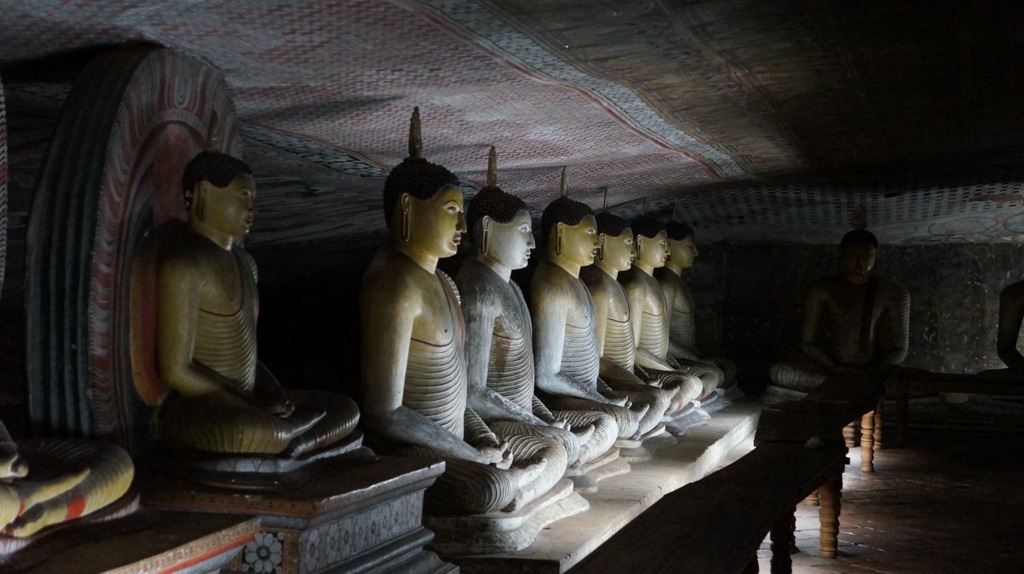
About Dambulla Caves
The Dambulla Cave Temple complex is carved into a massive granite outcrop. It rises 160 meters above the surrounding plains. The complex consists of five main caves, each serving as a shrine room. The caves are adorned with intricate murals that cover an area of 2,100 square meters. These paintings depict the Buddha’s life and tales from the Jataka stories.
The statues and paintings within the caves are of various sizes and styles. They reflect the different artistic influences that have converged at this site over the centuries. The caves contain 153 Buddha statues, three statues of Sri Lankan kings, and four statues of gods and goddesses. Among these are figures of the Hindu gods Vishnu and Saman, suggesting the syncretism of religious beliefs in ancient Sri Lanka.
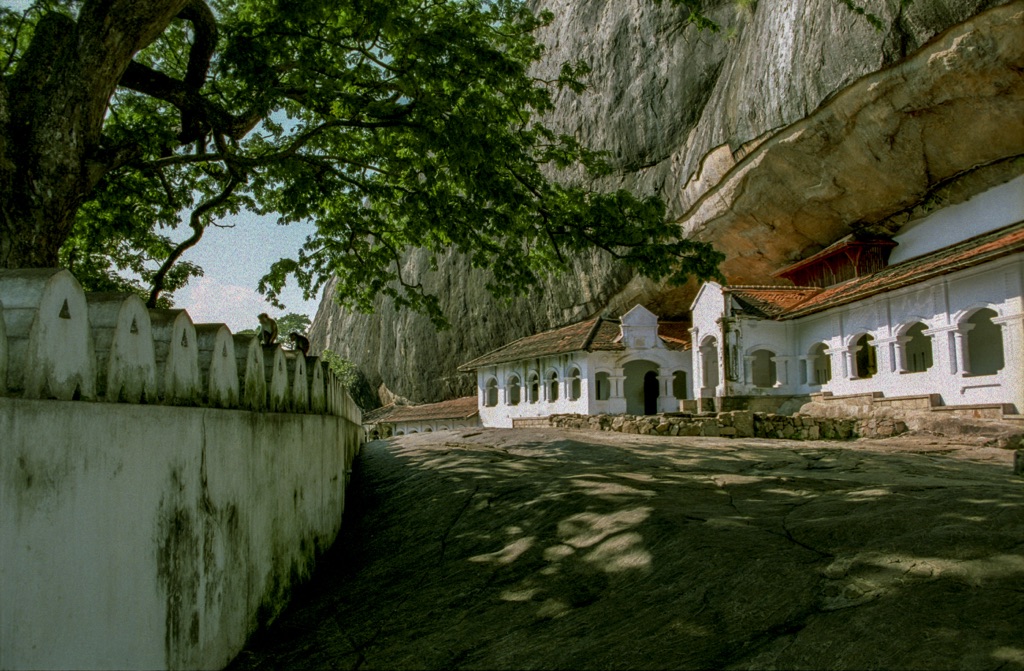
The construction and expansion of the caves required significant architectural skill. The natural structure of the caves was harnessed to create the temple complex. The builders used the rock’s natural contours to define the layout of the shrines and living quarters. They also carved drip ledges to prevent water from entering the caves.
The largest and most impressive of the caves is the Maharaja Lena, or Cave of the Great Kings. It features a large number of Buddha statues and a spectacularly painted ceiling. The ceiling murals depict scenes of the Buddha’s enlightenment and his first sermon. The attention to detail and the vibrant colors used in the murals are particularly noteworthy.
The temple complex also includes a series of smaller caves, meditation halls, and living quarters for monks. These areas are less ornate but are integral to the monastic function of the site. The Dambulla Caves are a harmonious blend of nature and human creativity. They provide a serene and contemplative atmosphere for both pilgrims and visitors.
Theories and Interpretations
Several theories exist about the use and significance of the Dambulla Caves. The primary function has always been as a monastic retreat and place of worship. However, the caves’ remote location suggests they may have also served as a safe haven during times of invasion or political turmoil.
The intricate murals and statues are subject to various interpretations. Some scholars believe they represent a visual guide to Buddhist teachings. Others see them as a testament to the artistic and cultural zenith of ancient Sri Lanka. The blend of Hindu and Buddhist iconography within the caves points to a period of religious tolerance and syncretism.
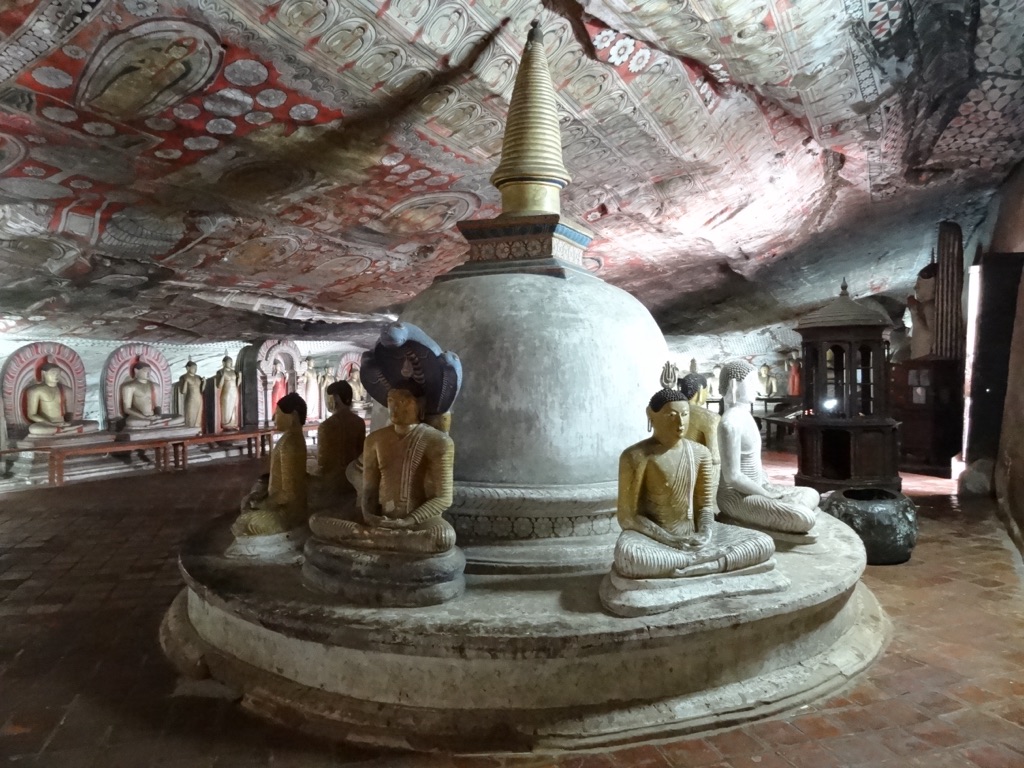
The mysteries of the Dambulla Caves include the original inspiration for their creation. The exact reasons behind King Valagamba’s decision to transform the caves into a temple complex remain a topic of speculation. Some suggest it was an act of gratitude for the shelter the caves provided, while others believe it was to establish a religious center to consolidate his power.
Historical records and carbon dating have helped to confirm the age of the caves. The dating of the murals and statues has been more challenging. The layers of paint and renovations over the centuries have made it difficult to pinpoint exact dates. However, stylistic analysis has allowed historians to categorize the artwork into distinct periods.
The Dambulla Caves continue to be a focus of archaeological and historical study. Researchers are interested in the construction techniques and the natural preservation of the site. The caves offer insights into the religious, social, and artistic history of Sri Lanka. They remain a source of fascination for scholars and visitors alike.
At a glance
Country: Sri Lanka
Civilization: Anuradhapura Kingdom
Age: 1st century BC
Conclusion and Sources
Reputable sources used in the creation of this article include:
- Wikipedia: https://en.wikipedia.org/wiki/Dambulla_cave_temple
- Official UNESCO website: https://whc.unesco.org/en/list/561

